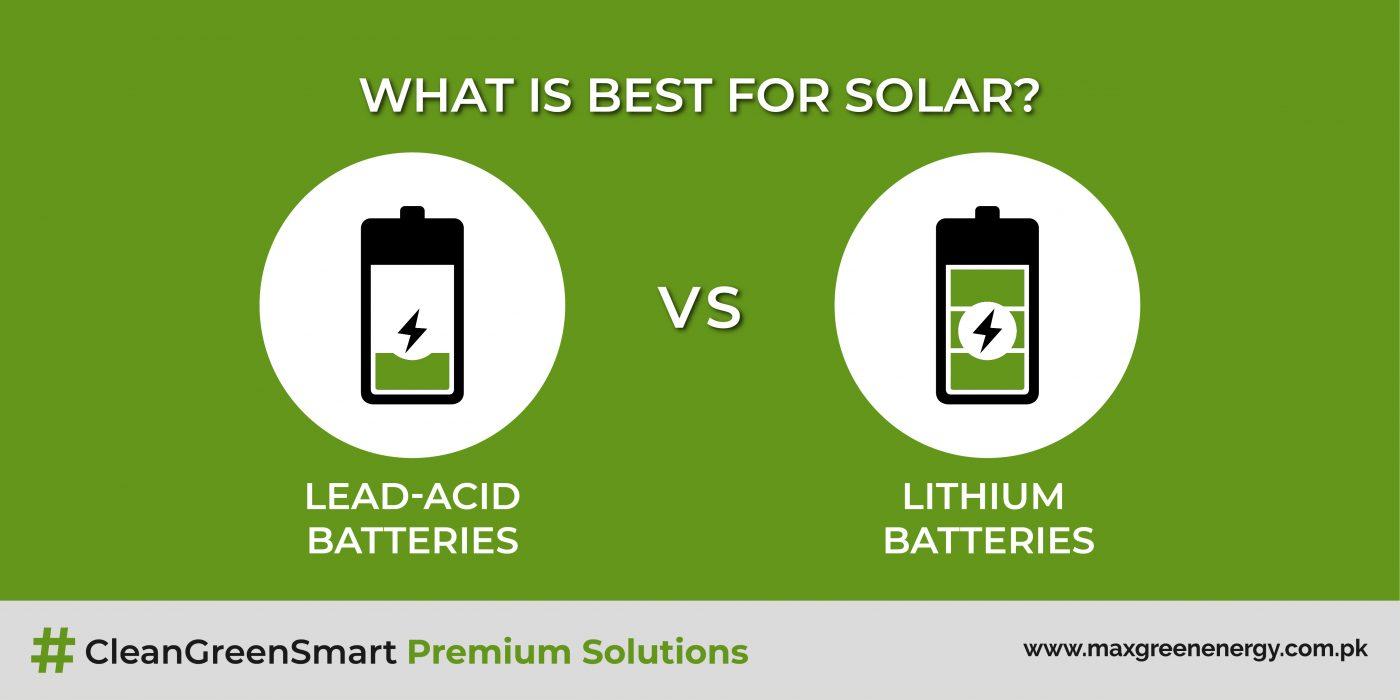Lead-acid vs. Lithium Battery Comparison
Lead-acid batteries cost less up front, but they have a shorter lifespan and require regular maintenance to keep them running properly. Lithium batteries are much more expensive up front, but they are maintenance-free and have a longer lifespan to match their higher price tag. This article offers a side-by-side comparison of both options.
This article goes over a choice you’ll need to make if you buy a battery-based solar system, either to move off the grid or to add energy storage to your grid-connected home.
Specifically, we’re going to look at lead-acid vs. lithium-ion batteries — the two main battery types used for solar. Here’s the summary:
Lead-acid is a tried-and-true technology that costs less, but requires regular maintenance and doesn’t last as long.
Lithium is a premium battery technology with a longer lifespan and higher efficiency, but you’ll pay more money for the boost in performance.
Lead-acid vs. Lithium Solar Batteries: The Basics
When you build a solar system, you have three main battery options:
Flooded Lead-Acid (FLA)
The distinguishing feature of FLA batteries is that the plates are submerged in water. These must be checked regularly and refilled every 1-3 months to keep them working properly.
Falling behind on upkeep can shorten the life of the batteries and void the warranty. FLA batteries also need to be installed in a ventilated enclosure to allow battery gases to escape.
Sealed Lead-Acid (SLA)
SLA batteries come in two types, AGM (Absorbent Glass Mat) and Gel, which have many similar properties. They require little to no maintenance and are spill-proof.
The key difference in AGM vs. gel batteries is that gel batteries tend to have lower charge rates and output. Gel batteries generally can’t handle as much charge current, which means they take longer to recharge and output less power.
Lead-acid vs. Lithium Batteries: Pricing Breakdown
Let’s look at how much it would cost to build a battery bank with all three options.
We’re not just interested in the up-front cost, but also the cost of ownership over the life of the system. As an example, we’ll look at how much the batteries would cost to power this 5.13 kW off-grid system, which we sell for $12,899 at the time of publication.
In an off-grid environment, you want to look at the estimated cycle life since you are cycling your batteries on a daily basis. This system would produce an estimated 23.08 kWh per day in the summer and 11.54 kWh per day in the winter.
We’ve done our best to give an apples-to-apples comparison of these batteries based on their printed specs. However, in real-world applications, factors like discharge depth, temperature, charging source, overall system design, and your willingness to perform regular maintenance will affect the true performance of your batteries.

